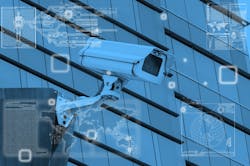By now, everyone is familiar with the story of the rapid rise and fall of video analytics when they were initially introduced in the security industry. There were numerous companies that entered the market and made promises that they were largely unable to keep. Many of those companies are now gone, but their technology lives on as the majority of their patents have been acquired by other video surveillance firms.
One company that is committed to making video analytics a significant part of their product portfolio moving forward is Avigilon, which earlier this year acquired patents from four different companies - Behavioral Recognition Systems, Inc. (BRS Labs), FaceDouble Incorporated, ITS7 Pty Ltd., and VideoMining Corporation - for just over $13 million. In late December, Avigilon acquired the entire patent portfolio and patent licensing program of ObjectVideo for more than $80 million. Combined with their purchase of VideoIQ in late 2013, Avigilon now holds over 200 U.S. and international patents related to video analytics.
Given this flurry of patent acquisitions, Avigilon is now looking to capitalize on that treasure trove of intellectual property by incorporating it into their solutions. At ISC West last week, the company announced the addition of self-learning video analytics technology to its HD Pro megapixel camera series. Avigilon’s self-learning video analytics solutions provide a high degree of accuracy in object detection and classification with the help of advanced video pattern detection and teach-by-example technology.
According to Avigilon CTO Dr. Mahesh Saptharishi, there are really three key differentiators for the company when it comes to how they leverage video analytics, the first of which is the level of image resolution they are able to maintain while running analytic algorithms.
“We have megapixel cameras today, but the majority of megapixel analytics takes that beautiful megapixel image and down samples it to either a quarter VGA or VGA resolution. You lose all the advantages of having that higher amount of detail, that higher amount of information you’re getting and the range that you’re able to detect at – you lose all of that,” explained Saptharishi. “What we’ve done is built a system that can actually take advantage of megapixel resolution images. That’s important, that gives us higher accuracy, higher range and you can do more with analytics than you could with processing at a lower resolution.”
Second, Saptharishi said that Avigilon has simplified the process of implementing video analytics. Whereas in the past an integrator would have to do all of these advanced calibrations to reduce the likelihood of false alarms, Avigilon’s analytics are simply plug-and-play.
“In order for most analytics to function today, it involves the integrator to do something different. It is not just a matter of hanging a camera up and then everything magically working,” said Saptharishi. “All of that work translates to a situation where only a subset of cameras ever deployed becomes addressed with analytics. When you make it plug-and-play, the advantage of analytics, besides just alarming, the ability to search video, the ability to store video and how long you want to store it becomes possible without that overhead of taking a lot of time to install.”
Lastly, Saptharishi said that Avigilon’s analytics have the ability to continuously learn the environment they are placed in, which helps reduce false alarms.
“If I have an integrator who spends a half-hour or two hours per camera setting it up, it performs exceptionally well minutes after it is installed and every day after that when the environment changes – seasons change, buildings come and go, new structures come into the scene – if what you’ve done cannot keep up with all of those changes, then it becomes a situation where you are generating information that people often don’t want to see,” added Saptharishi. “The ability to learn continuously, the ability to look at a scene and what people are shaped liked, what vehicles are shaped like and what things that you want to ignore are shaped like and continuously learn and adapt to that, it becomes an incredibly important thing to make sure we are performing at the same level of expectation as the user.”
Despite these dramatic improvements, Saptharishi admits that analytics technology will never be perfect and that users should not have unrealistic expectations. “If there is someone out there who expects analytics not to miss anything and produce no false alarms, they will be disappointed,” he said. “Even we as humans do not have a 100 percent detection rate or zero false alarms.”
Aside from detection and tracking capabilities, one of the biggest current trends in analytics technology is being able to leverage video surveillance for business intelligence. While most of the typical applications for these analytics – people counting, queue line monitoring, dwell time, heat mapping, etc. – are geared towards the retail sector, they are also finding homes in other vertical markets. March Networks, which launched its Searchlight 4 video-based business intelligence solution for retailers earlier this year, introduced a new version of the software for the banking industry at ISC West last week.
According to Net Payne, chief marketing officer for March Networks, Searchlight helps users in these industries expand the use of their video system beyond loss and fraud prevention.
“The question people are always asking is, ‘what else can I do with my video system?’ How do we go just from a security and loss prevention solution to one that integrates data and allows me to do all of that faster and better? And now, how do I take video analytics and turn those millions of hours of video into actionable data itself and integrate that with other data sources?” said Payne.
Moving forward, Saptharishi believes there will be a shift in the use of video analytics from simply being able to detect a person or vehicle in a scene to actually be able to predict they’re behavior.
“What we define as analytics today – people and vehicle detection, tracking – is going to be equivalent to how we think about motion detection two years from now,” said Saptharishi. “It is not going to be about can I detect a person with some degree of accuracy, but it going to be how do I interpret what that person is doing? I think the next two years are really going to be moving from descriptive analytics to predictive analytics.”





